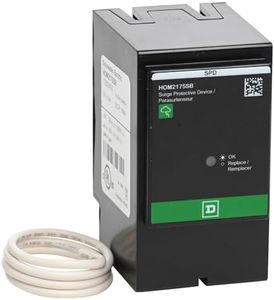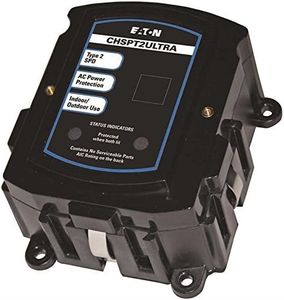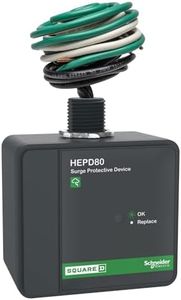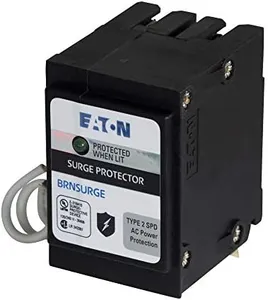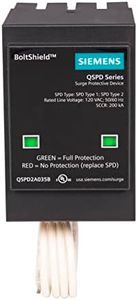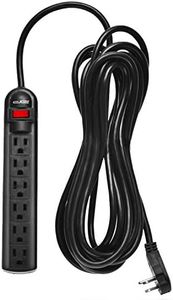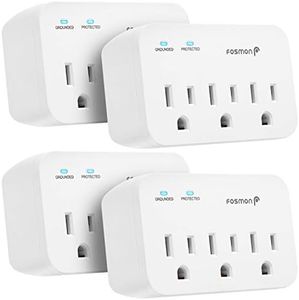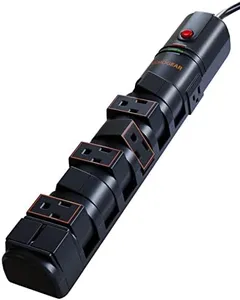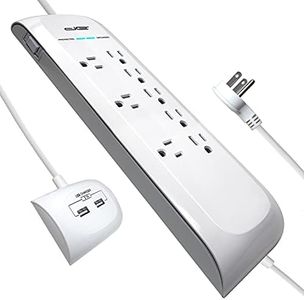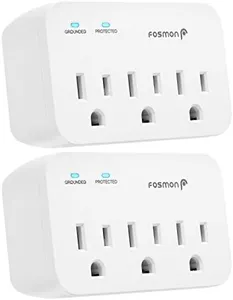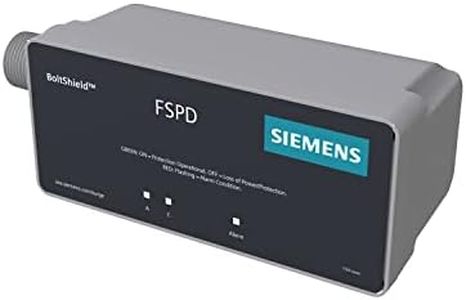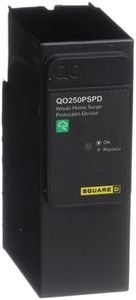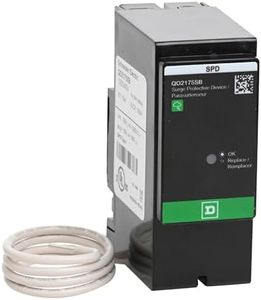10 Best Whole Home Surge Protectors 2025 in the United States
Our technology thoroughly searches through the online shopping world, reviewing hundreds of sites. We then process and analyze this information, updating in real-time to bring you the latest top-rated products. This way, you always get the best and most current options available.

Our Top Picks
Winner
Square D by Schneider Electric HOM2175SB Homeline SurgeBreaker, Surge Protection Device, 25kA, 120/240V, 1-Phase, 3-Wire
The Square D by Schneider Electric HOM2175SB Homeline SurgeBreaker is a reliable option for whole-home surge protection with a surge protection rating of 25kA. This means it can handle significant electrical surges, protecting your home appliances and electronics effectively. The device offers equal protection to all circuits and receptacles in your home, which is a significant advantage for comprehensive surge protection. One of its strengths is the LED indicator, which provides a clear visual indication of the device's status, ensuring you know when it is functioning correctly or needs attention.
Additionally, the UL 1449 3rd Edition Listing adds to its credibility and assurance of quality and safety standards. Installation is relatively easy with its plug-on design, though it does require two spaces in your load center, which might be a consideration if space is limited. This surge protector can be used in various locations, including service entrance points, CSEDs, and Homeline load centers, making it versatile. The single-phase design is typical for residential use, but if you have a more complex electrical setup, this might not be suitable.
The HOM2175SB is a solid choice for those needing robust whole-home surge protection with easy installation and clear operational indicators.
EATON CHSPT2ULTRA Ultimate Surge Protection 3rd Edition, 2.38" Length, 5.25" Width 7.5" Height
The EATON CHSPT2ULTRA Ultimate Surge Protection is designed to protect your home or office from damaging power surges. It universally connects to any manufacturer’s load center, making installation straightforward for most users. This surge protector boasts features that cater to various settings, such as offices, restaurants, apartments, and hotels. Its compact dimensions (2.38" x 5.25" x 7.5") and lightweight design (8 ounces) also add to its appeal, allowing it to fit well in tight spaces.
One of the notable strengths of this device is its high-quality construction, which provides reliable surge protection. The product is backed by a UL 1449 rating, ensuring it meets safety standards, which is a reassuring feature for consumers.
The EATON CHSPT2ULTRA is an excellent choice for those seeking a reliable whole-home surge protector, especially if ease of use and universal compatibility are priorities.
Customer Highlights
A summary of real customer reviews to highlight what shoppers are saying!Schneider Electric – Square D HEPD Whole Home Electronics Protective Device, AC Surge Protection, Type 1 SPD, 120/240VAC, 1-Phase 3-Wire, 80kA Current
The Schneider Electric Square D HEPD Whole Home Electronics Protective Device is designed to protect all your home's electrical devices from damaging surges, making it an excellent choice for those looking to safeguard their appliances and electronics. One of its notable strengths is its high surge protection rating of 80 kA, which is substantial and offers robust protection against power spikes. Additionally, it has a low clamping voltage, meaning it activates quickly to control spikes before they can damage your devices. Its response time is impressive, ensuring that your equipment is shielded almost instantaneously during a surge event.
A significant advantage of this product is that it provides downstream protection, safeguarding not only a few devices plugged into power strips but all devices connected to your home's electrical system, including crucial systems like HVAC and security. This broad coverage adds a layer of convenience and peace of mind for homeowners.
While the product is easy to install, it does require access to your home’s load center, which may necessitate professional installation for some users. Moreover, while the warranty is a reassuring factor, it’s essential to check the specifics, as coverage terms can vary. The LED status indicator is a valuable feature, alerting you when maintenance or replacement is needed, which contributes to hassle-free operation. It excels in protecting a wide range of devices, extending their lifespan and potentially saving on repair costs. Just be sure to consider installation needs and whether additional features match your specific requirements.
Buying Guide for the Best Whole Home Surge Protectors
Choosing the right whole-home surge protector is crucial for safeguarding your home’s electrical system and all connected devices from power surges. Power surges can occur due to lightning strikes, power outages, or even the operation of high-power electrical devices. A whole-home surge protector is installed at your main electrical panel and provides a first line of defense against these surges. Here’s how to approach picking the best one for your needs.FAQ
Most Popular Categories Right Now
